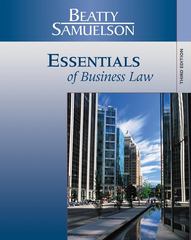Question
Suppose the economy is characterised by the following equations that give the real expenditure of each sector in $billions and taxes are T=500 ($billion). Consumption:
Suppose the economy is characterised by the following equations that give the real expenditure of each sector in $billions and taxes are T=500 ($billion).
Consumption: C = 100 + 0.65 (Y - T) - 500 r
Investment: I = 400 - 1250 r
Government: G = 450
Net Exports: NX = 400 - 0.15Y- 500 r
Note enter r as a
decimal. eg. r= 0.02
a.Show that expression for Y as a function of r (the IS curve) is given by Y = 2050 - 4500 r and calculate the level of real GDP if the real interest rate, r is 2%.
b.Use real GDP and the real interest rate from a to calculate the level of, household saving, government saving, and net capital inflow and verify it equals investment.
c.What is the open economy multiplier for this economy? If government expenditure increased by $20 billion what do you estimate the level of GDP be in the short run?
d.If inflation in the following year t+1, is 4.35 times the previous year's output gap that is
t+1 = 4.35 (Yt - YN)/ YN and YN =1960 ($billion) what is the level of inflation, t+1 and the price level P t+1 = 1 + t+1, the year following the fiscal stimulus.
e.Use the price level Pt+1 from part d and real GDP Yt from part c to find the real interest rate rt+1 that balances the real demand and real supply for money the year following the fiscal stimulus, which are given by:
Money Demand: M/Pt+1 = Yt/ rt+1
Money Supply: M/Pt+1 = 98,000 / Pt+1
Note enter r as a
decimal. eg. r= 0.02
Use your result and the IS curve with fiscal stimulus Yt+1 = 2090 - 4500 rt+1 to find the level of real GDP Yt+1 the year following the fiscal stimulus.
f.Suppose that in the long run prices adjust so that the economy returns to its natural level of output such that Yt= Yt+1=YN=1960 ($billion). Use the IS curve from part e to find the long run real interest rate rt+1=rN and find the price level that balances the real demand and supply for money in the long run
g.Explain why the increase in government spending initially provided a large boost to GDP, but then eroded and resulted in higher prices and higher interest rates a year after the stimulus and in the long run.
Step by Step Solution
There are 3 Steps involved in it
Step: 1

Get Instant Access to Expert-Tailored Solutions
See step-by-step solutions with expert insights and AI powered tools for academic success
Step: 2

Step: 3

Ace Your Homework with AI
Get the answers you need in no time with our AI-driven, step-by-step assistance
Get Started


